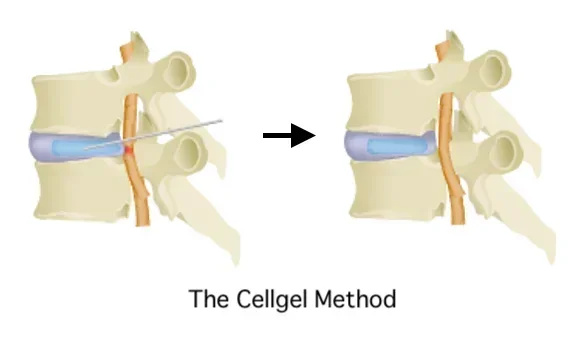Column The Relationship Between Back Pain and Stretching: Some Effective Stretches to Relieve Back Pain
May 16, 2025
Back pain is said to be a real national health problem in Japan, with more than 80% of the population having experienced back pain at least once in their lifetime.

In this article, we will explain the relationship between back pain and stretching.
The causes of Back Pain
Back pain can be caused by a variety of factors.
Insufficient muscle strength
The abdominal and back muscles are responsible for supporting the spine. If those muscles are not strong enough, extra strain will be placed on the lower back, resulting in pain.
Muscular Tension
Prolonged sitting or poor posture puts strain on the lower back and causes muscles to stiffen. Prolonged sitting in the same posture can contribute to muscle spasms, which can in turn trigger lower back pain.
Medical conditions such as disc herniation
Excessive strain on the lower back causes damage to the intervertebral discs. Then, the nucleus pulposus leaks from within the disc, resulting in disc herniation. When a herniated disc compresses a nerve, back pain occurs. In addition, the more the disc degenerates, the more various spinal disorders such as spinal canal stenosis and spondylolisthesis may develop, which will also aggravate back pain.
The relationship between back pain and stretching
Stretching plays an important role in relieving and preventing back pain.
Stretching helps to increase flexibility and loosen muscles. Flexible muscles are less likely to tense and cause pain. It also helps maintain proper posture and reduces strain on the lower back.
Stretching also helps improve blood circulation. Improved blood flow allows oxygen and nutrients to reach the muscles more easily and promotes muscle recovery. This can help alleviate or prevent back pain.
Even if the pain is caused by disc herniation or a similar condition, incorporating stretching can help mitigate the symptoms.
Stretches which are effective for lower back pain
Stretches can loosen tense muscles, improve blood circulation, and reduce the strain on the lower back.
Stretch for the lumbar muscles
Stretching the lumbar muscles increases flexibility around the hip joints and stimulates blood flow in the muscles around the lower back. This can be effective because back pain may be caused by an obstruction of the blood flow.
1. Spread your legs back and forth and kneel on your back leg.
2. Gradually move your upper body forward.
3. Slowly return to the starting position.
4. Do the same for the opposite side.

Stretch holding one knee
By holding one knee, you can stretch your back and buttocks, and also stretch the lumbar muscles at the front of the pelvis.
1. Lie on your back, exhale, while holding one knee close to your chest.
2. Hold the posture for about 15 seconds while continuing to breathe.
3. Return the knee back to the floor and go back to laying on your back.
4. Do the same for the other side.

Stretch pulling a towel across the sole of the feet
1. Lie on your back with one knee bent.
2. Hold the ends of the towel with both hands and pull the towel across the soles of one of your foot.
3. While lying on your back, stretch the leg stretched with the towel at an angle of about 60 degrees from the floor.
4. Breathe out while holding the posture for 10 seconds.
5. Do the same for the other leg.
* Adjust the length of the towel by first testing the stretch with towels of different lengths to make sure that the backs of the calves and thighs only feel a moderate stretch.

Stretch for twisting the lower back
1. Lie on your back with both knees bent.
2. Rotate the legs to the right and left side (rotate the whole hip as you do so).
* Take your time to do it slowly while breathing out.
Repeat the exercise for about 1 minute.


Points of caution when stretching
All stretches should not be painful when you perform them.
Start by doing them once or twice and gradually increase the number of times.
Stretching should be done on a long-term basis and be kept within a reasonable range.
Cases when you should not stretch
Please do not stretch in the following cases:
・If you feel more pain or numbness in your legs than usual.
・If you experience symptoms different from usual, such as walking difficulties.
・If your symptoms aggravate after stretching.
In such cases, consult a doctor without delay.
Treatment at our clinic
When back pain occurs, it is crucial not to leave it untreated, and get a diagnosis from a medical specialist. Early detection and proper treatment can prevent the condition from aggravating and even cure it completely.
Our clinic offers the Celgel method, a treatment that repairs damaged intervertebral discs.
With our cellgel Method, a drug is injected into the disc and fills the cracks, before turning into a gel that replaces the fissures, thus providing a fundamental cure. It is characterized by the fact that the volume of the disc is not reduced and the drug remains in the disc as a gel-like implant after treatment, thus preserving the disc.

If you suffer from back pain or have ever been diagnosed with disc herniation, please consider a consultation at our clinic.
Related Articles
Differences Between Western and Eastern Medicine in Relation to Low Back Pain
If You Led This Kind of Lifestyle as a Youth, You Have a Time Bomb Ticking in Your Lower Back!
Low Back Pain and Posture: Reducing Pain by Adopting the Correct Posture
Back Pain and Physical Inactivity: How Moderate Exercise can Keep You Healthy
The Relationship Between Stress and Back Pain: How to Maintain Good Mental and Physical Health
The Relationship Between Back Pain and Sleep: How to Create a Comfortable Sleeping Environment
A Must Read for Patients with Back Pain on How to Choose the Right Bedding and Mattress



